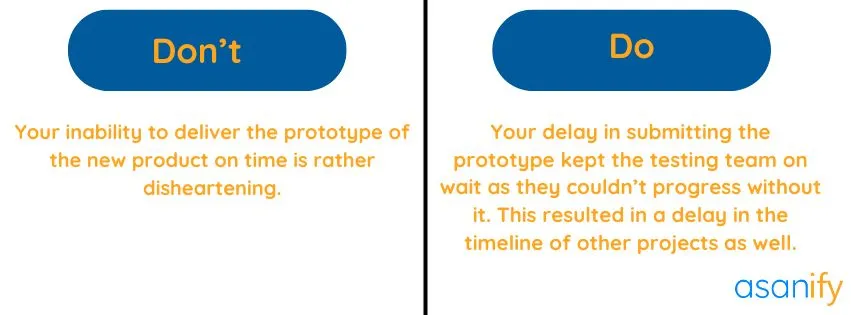Gone are the days when traditional employee performance review processes used to fetch results. Needless to say, most company executives, managers, and employees alike have come to abhor the obsolete techniques of reviewing employee performance lately. As per Deloitte’s shocking revelation, 58% of executives are of the view that their present process of performance review doesn’t result in enhanced employee performance or engagement. So, what does things point to? Of course, towards the need of embracing a set of innovative ways of evaluating performance review of employees.
What is intriguing to find is that 66% of employees with impressive performance scores aren’t really good performers. Is it because of using a faulty process of performance review? Well, yes!
The roadmap lying ahead is to plan actionable strategies and come up with effective steps to witness the conclusion of a successful session of performance evaluations for employees.
If you are planning to conduct the employee performance review process in your company for the first time or pondering over transitioning from a traditional to a smart way of evaluating work performance of your employees, this blog has everything that you seek to know. Before we unlock the steps to drive performance review success, let’s get started with the basics.
Table of Contents
- What is a Performance Review for Employees?
- Importance of Conducting Performance Reviews of Employees
- Who Runs an Employee Performance Review Process?
- What is the Best Approach for Performance Reviews for Employees?
- What Should a Performance Review Assess?
- What to Write or Say in a Performance Review for Employees?
- Differences Between Traditional and Modern Employee Performance Review
- How to Take Advance Preparations to Conduct a Performance Review Process for Employees?
- 7-fold Approach to Creating an Ideal Performance Review Process
- Ascertain the Type of Employee Performance Review Process
- Decide on the Performance Review Frequency
- Hold a Calibration Meeting to Determine the Evaluation Criteria
- Design the Employee Performance Review Workflow
- Use STAR Approach to Complete Performance Reviews
- Organize a Performance Review Meeting
- Usual Follow-up After the Performance Review Process Gets Over
- Employee Performance Review Hazards to Avoid
- Frequently Asked Questions- Employee Performance Review Process
Download Free Template of Performance Review for Employees PDF
What is a Performance Review for Employees?
Performance review for employees refers to a systematic and structured procedure in which an employer or manager evaluates and assesses an employee’s job performance, typically on an annual or periodic basis. This process involves setting clear expectations, reviewing an employee’s accomplishments, strengths, weaknesses, and providing feedback and guidance for improvement. It can also include goal setting for the upcoming period and may impact decisions related to promotions, salary increases, and development plans.
Having a proper performance review methodology in place ensures that subsequent performance appraisal process will also be completed efficiently. Adopting killer strategies and implementing these with the aid of a Performance Management System (PMS) can work wonders. This is because, chalking out smart techniques will bear fruit if there is a smarter Performance Management Software to materialize these for real.
If you want to boost workforce management at your organisation while setting the right chord for continuous feedback and constant development, prioritizing employee performance reviews is a must.
Now that we know what employee work review entails, let’s see why holding staff performance review sessions becomes an unmissable activity in a company.
Also read: Employee Survey- How to Craft the Best Questionnaire?
Importance of Conducting Performance Review for Employees
Conducting performance reviews for employees is a crucial aspect of effective human resource management within any organization. These reviews serve several important purposes, contributing to the growth and success of both the individual employee and the company as a whole.
While talking about the essence of appraisal feedback to employee post-review, it is crucial to understand that performance evaluations are an ongoing thing. You just can’t stop doing it on the pretext that you had held one many years ago. It is not an one-time thing. Evaluation for employee performance has to be a continuous thing.
66% of companies following the approach of continuous performance management succeeded in executing productivity improvements throughout the year.
Companies that embrace the idea of continuous performance evaluation for employees outperform their competitors by 24%. Here are some key reasons why performance reviews are important:
1. Makes Room for Feedback and Communication
Performance reviews provide a structured forum for managers to offer constructive feedback to employees. This feedback can include recognition of achievements and identification of areas for improvement. It opens up a two-way communication channel, allowing employees to express their concerns or aspirations, fostering a more open and transparent work environment.
2. Offers a Broad Scope for Goal Setting and Alignment
Performance reviews help set clear and measurable objectives for employees. When employees understand what is expected of them, they are more likely to work towards the organization’s goals, thus aligning their efforts with the company’s mission and vision. As a result,
3. Fosters Development and Training
Performance reviews identify an employee’s strengths and weaknesses. This information is invaluable for designing training and development programs tailored to individual needs. It ensures that employees have the necessary skills and knowledge to excel in their roles and adapt to changing circumstances.
4. Brings in Motivation and Recognition
Recognition and appreciation of an employee’s hard work and achievements can boost morale and motivation. Knowing that their contributions are acknowledged and valued, employees are more likely to remain engaged and committed to their work.
5. Boosts Employee Performance
Performance reviews provide a basis for addressing performance issues. When problems or deficiencies are identified, managers can work with employees to create improvement plans and offer the necessary support to help them succeed in their roles.
6. Aids in Succession Planning
Identifying high-potential employees during performance reviews can help in succession planning. It allows organizations to groom and prepare individuals for leadership roles, reducing the impact of key personnel turnover.
7. Ensures Fair Compensation
Performance reviews often play a role in determining compensation, bonuses, or raises. By evaluating an employee’s contributions and achievements, organizations can fairly reward their efforts, which can be essential for retaining top talent.
8. Legal and Ethical Considerations
Performance reviews can help in documenting an employee’s performance over time. This documentation can be crucial in legal matters, such as disputes, disciplinary actions, or terminations, to ensure that decisions are made fairly and based on objective data.
9. Assists in Team Building and Collaboration
Performance reviews can also address an employee’s ability to work within a team, fostering a collaborative and harmonious work environment. Identifying and resolving conflicts or communication issues can lead to a more productive and cohesive team.
10. Ensures Overall Organizational Improvement
When individual employees receive feedback and develop their skills, it contributes to the organization’s growth and improvement. Regular performance reviews can lead to a more skilled and motivated workforce, which benefits the company’s long-term success.
Suggested Read: Top 10 Payroll Software for Accountants in 2023
Who Runs an Employee Performance Review Process?
What is the Best Approach for Performance Reviews for Employees?
Here comes the most confusing part of conducting performance reviews. With diverse HR practices, performance management strategies and tools being found in plenty, there won’t ever be any standard performance reviewing plan. As is obvious, no two employee performance review processes will be alike. While some companies follow rating or grading system, others follow the format of a questionnaire. Some even prefer to go with a free-form style.
Every organisation is distinct in terms of their culture and the way they carry out various processes. As is obvious, you will choose a strategy that fits your company goals and brings value. Performance reviews for employees, in general, aid in boosting employee engagement, productivity and fosters a healthy and thriving work culture. By now, it is clear that the goal of every employee performance review is the same. Despite that, studies have revealed that traditional method of conducting performance review for employees doesn’t fetch positive outcomes. Rather, it makes the entire process boring, hard to follow, and demotivating.
Need for a Modern & Efficient Performance Management System
Traditional performance management system is not really preferred by managers and employees. An online research report published in the Journal of Industrial and Organisational Psychology has shed light on crucial insights:
- 59% of surveyed employees said that Performance Management reviews are a waste of time. Further, another 56% of them said that they did not receive apt feedback on the exact areas of improvement.
- 95% of managers responded that they are not satisfied with their Performance Management Systems.
- 90% of HR heads are of the view that their existing Performance Management Systems don’t fetch the right output.
All these point towards the fact that adopting a modern and power-packed Performance Management tool is going to be the most prudent thing to do. The smarter the PM system is, the more efficient it will be at engaging employees and elevate work satisfaction levels. Therefore, instead of fixating your mind on conducting annual reviews with a traditional approach, switching to an efficient Performance Management System is going to work wonders. In that way, you can maintain a consistent feedback culture which is crucial in boosting employee morale and engagement.
What should a Performance Review Assess?
A performance review of employees should assess various aspects to provide a comprehensive evaluation of their work. Here are the key areas to consider:
- Job-specific skills
- Job knowledge
- Quality of work
- Productivity and efficiency
- Communication
- Problem-solving and decision-making skills
- Initiative and innovation
- Teamwork and collaboration
- Leadership (if applicable, depending upon the job role)
- Goal achievement
- Adaptability
- Attendance and punctuality
- Customer service (if relevant)
- Ethics and professionalism
- Self-development
- Holistic performance
It is important to bear in mind that reviewing employee performance needs to be a constructive dialogue between the employee and the manager, focusing on both past achievements and future development. After all, the core aim behind indulging in performance appraisal in HRM is to motivate employees, recognize their contributions, and support their growth within the organization.
As per a Gallup research report, 32% of employees quit their job recently owing to utter lack of promotional chances. This, once again, reiterates the need for consistent performance reviews and subsequent quality of work appraisal comments.
What to Write or Say in a Performance Review for Employees?
As a constituent of performance management strategies, holding performance review for employees is crucial. It is obvious for the question to arise as to what is to be written in a performance review for employees. Before we get into comprehending this, it is important to understand that performance review for employees offers the right scope to discuss their strengths and weaknesses. Therefore, while writing performance review comments for employees, the fine line that blurs being helpful and responding in a critical way needs to be adhered.
Ideally, performance review and feedback entails writing a careful evaluation of an employee’s achievements while charting out a data-intensive analysis of their areas of strength, weaknesses, and areas that require further improvement. In a report by Gallup, it was revealed that only 21% of US employees agree to have received meaningful feedback from their employers. This once again points to the need of writing effective performance review comments for employees. Ideal feedback is the one that doesn’t express strong despise or apply harsh words towards the performance of any employee. Inculcate an encouraging tone in the performance review feedback so that the employees realize that they need to perform better next time.
Let’s have a look at a few instances to understand how to go about giving performance review employee comments.
1. Put Repercussions Into Context
While writing performance review for employees, explain how the performance and actions of an employee will have direct repercussions on other team members.
2. Instill a Note of Positivity in the Feedback
It is very important to emphasize the positive note in the content that you write as performance review for employees. While highlighting the strengths of an employee, make sure to offer constructive criticism on the things that they could have done better. Adding a tone of encouragement is a must.
3. Mention How The Employees Can Better Their Performance By Bringing Up Their Past Actions
Instead of asking your employees to transform their skills for better completely, take into context their past performance and suggest improvements based on that.
Differences Between Traditional and Modern Employee Performance Review
| Parameters | Traditional Employee Performance Review | Modern Employee Performance Review |
| Frequency and Timing | Typically conducted annually. | Can be more frequent, such as quarterly or even ongoing feedback, allowing for real-time adjustments. |
| Format | Often a formal, structured meeting with a manager, involving lengthy forms and ratings. | Emphasizes flexibility and may include informal discussions, peer reviews, and technology-driven platforms. |
| Focus | Primarily retrospective, looking at past performance and historical data. | Emphasizes a forward-looking approach, focusing on continuous improvement and development. |
| Performance Metrics | Tends to rely on rigid rating scales and standardized criteria. | May use a variety of qualitative and quantitative metrics tailored to individual roles and goals. |
| Feedback | Typically a one-way conversation from the manager to the employee. | Encourages two-way feedback, including self-assessment and peer feedback, promoting open communication. |
| Development and Coaching | Often limited to identifying areas for improvement and setting goals. | Includes coaching and support for skill development and career growth. |
| Recognition | May not place a strong emphasis on acknowledging and celebrating achievements. | Recognizes and rewards outstanding performance, fostering motivation and engagement. |
| Documentation | Requires extensive paperwork and record-keeping. | May use digital tools for easier documentation and data analysis. |
| Employee Involvement | Employees might feel less engaged and empowered in the process. | Encourages employees to take an active role in managing their performance and career. |
| Alignment with Organisational Goals | May not always link individual performance to broader company objectives. | Aims to ensure that individual goals and performance align with organizational goals. |
How to Take Advance Preparations to Conduct a Performance Review Process for Employees?
Being a manager or company leader entails taking care of every aspect of performance appraisal process. Just as the fundamental fact goes: “People join companies, but they leave managers.” This is because it is upon the managers of an organization to pay heed to employee performance assessment, give the necessary feedback, and boost employee engagement rate.
Not to be considered as tax, legal, financial or HR advice. Regulations change over time so please consult a lawyer, accountant or Labour Law expert for specific guidance.










